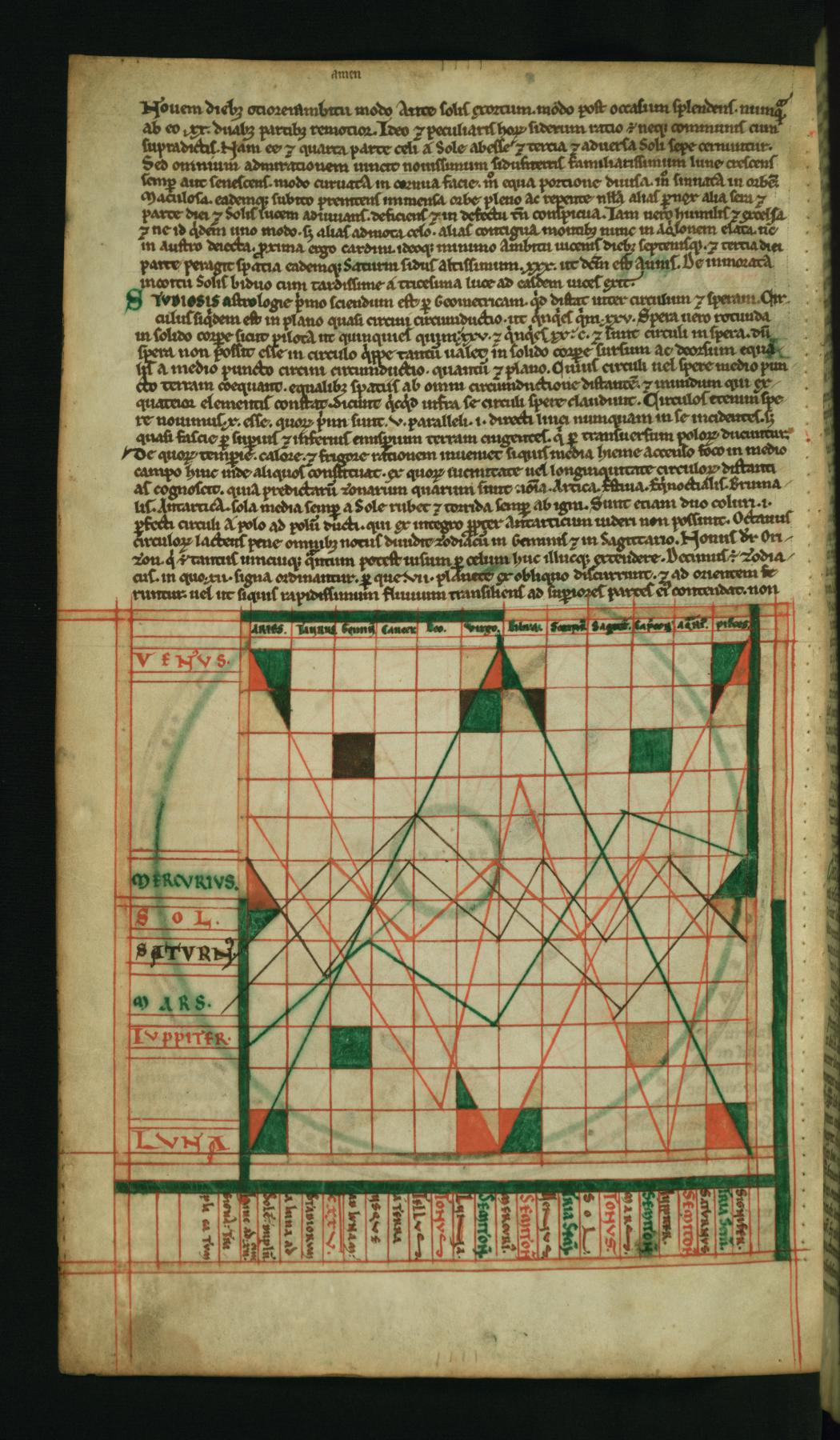Diagram of Planetary Courses in the Zodiacal Signs
(Manuscripts and Rare Books)
In this diagram, the names of the seven planetary bodies – the Sun, the Moon, and the five known planets – are written along the vertical, at left. At top, along the horizontal, are the zodiacal names. One may follow the path of each planetary body through the zodiac by reading the graph from left to right. The diagram gives a sense not only of the independence of each planet's orbit, but also of the different lengths of time it took each planet to complete one circuit of the zodiac. Along the bottom of the diagram is a list of the planetary bodies, with their distances given as musical values -- a tone (tonus), a semitone (semitonium), or three semitones (tria semitonia) -- as well as an abbreviated account of interplanetary distances, given as proportions of the distance from Earth to the Moon.
Provenance
Provenance (from the French provenir, 'to come from/forth') is the chronology of the ownership, custody, or location of a historical object. Learn more about provenance at the Walters.
Gruel and Englemann Collection, Paris [1]; acquired by Henry Walters, Baltimore, 1903; by bequest to Walters Art Museum, 1931.
[1] no. 131, bookplate on inside upper board
Geographies
United Kingdom, England (Place of Origin)
Measurements
H: 10 1/2 × W: 6 1/8 in. (26.7 × 15.5 cm)
Credit Line
Acquired by Henry Walters, 1903
Location in Museum
Not on view
Accession Number
In libraries, galleries, museums, and archives, an accession number is a unique identifier assigned to each object in the collection.
In libraries, galleries, museums, and archives, an accession number is a unique identifier assigned to each object in the collection.
W.73.5V



